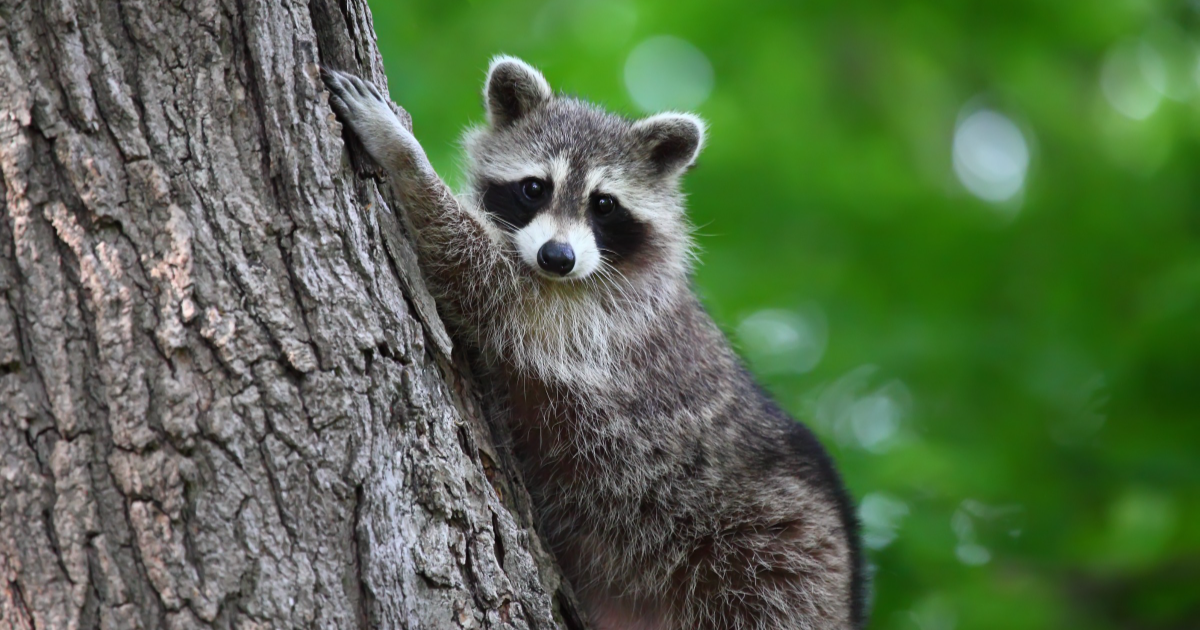
Photo by bukharova / Getty Images
By Ashley Sum Yin U
Raccoons are curious and intelligent creatures with dexterous hands that allow them to adapt to and thrive in urban settings. Even with their cute appearance, raccoons can earn a reputation among residents and communities, particularly when they become unwelcome house guests. However, they play an important role in our ecosystems, and it is important that we learn to appreciate our wild neighbours and coexist with them!
Raccoon's Roles in Ecosystems
Raccoons are omnivores, and feed on insects, rodents, and other organisms, as well as the remains of dead organisms; this gives them an important place in the ecosystem, managing populations of species that can have significant negative impacts.
Digging for food is a benefit to ecosystems, as soil turnover increases soil health and crop growth. Raccoons are also excellent seed dispersers, as they deposit seeds of berries, fruit, and nuts in their waste – essential for plant life and biodiversity.
FUN FACT: Raccoon’s aren’t wearing masks! The dark circles of fur surrounding their eyes is thought to help their nighttime or low light vision by reducing glare.
Preventing Negative Encounters
Raccoons pose no threats to humans and typically avoid people. However, access to food sources can increase their proximity tolerance of humans and lead to demand behaviours. The best thing to do if a raccoon approaches you is to stomp, yell, clap your hands, and make noises to encourage them to move along.
Raccoons are opportunistic feeders, which means that you may find them looking for easy-to-access meals in dumpsters, bird feeders, or gardens. The most important thing you can do to prevent negative encounters is to eliminate food sources.
Never feed wildlife, and let your neighbours know why! You can also lock and secure waste containers and use wildlife-resistant receptacles, pick up and manage fallen or ripe fruits and berries, don’t leave pet food outdoors, and if you use a bird feeder, follow the best practices from local authorities. Wildlife who are fed by people, directly or indirectly, may have increased proximity tolerance – they are more likely to take risks to access food resources, which can include crossing busy streets, being nearer predators/domestic animals, and approaching people directly.
To keep wildlife (not just raccoons) out of the house or other human-made structures, do a seasonal inspection of your home to identify access points. If you believe wildlife are already in your home, it is strongly recommended you contact a humane wildlife removal service. Check the AnimalKind list if you’re in British Columbia!
Don't Trap and Relocate
Trapping and relocating raccoons once they have moved into your home is not a solution. It is neither permanent nor humane. A new raccoon can move into an empty den at any point, and raccoons can injure or kill themselves from trying to escape from a trap. You also risk separating families. The stress of relocating to a new area can cause a mother to abandon her babies from the pressure of having to set up a new home, find new food sources, and more. Removing a mother from her babies or vice versa can also lead to significant damage to both the location and the animals.
Humane deterrents to use to prevent a raccoon or other wildlife from using a specific location as a den site includes bright motion-sensitive lights, a transistor radio, or containers with rags of bleach (learn more here). Raccoons and other wildlife have learned to adapt to and coexist within the urban settings we’ve created; it’s fair that we learn to do the same!
Our furry neighbours have learned to adapt to living with us in urban settings. It is only fair that we learn to do the same!
This article was written by volunteer Ashley Sum Yin U on behalf of The Fur-Bearers. Would you like to be a volunteer writer? Find out more about volunteering by clicking here.
AnimalKind, https://animalkind.ca/
BC SPCA, Raccoons, https://spca.bc.ca/ways-to-help/take-action/urban-wildlife/raccoons/
BC SPCA, Urban Wildlife, https://spca.bc.ca/ways-to-help/take-action/urban-wildlife/
BC SPCA, Wildlife Control Best Practices, Raccoons, https://spca.bc.ca/wp-content/uploads/best-practices-raccoons.pdf
Critter Care Wildlife Society, Raccoons, https://www.crittercarewildlife.org/racoons
Dowd, B. (2021). “Why do raccoons have a black mask around their eyes?”. Skedaddle Humane Wildlife Control. https://www.skedaddlewildlife.com/location/durham-region/blog/why-do-raccoons-have-a-black-mask/
Flores, A. (2022). “Raccoons play an important role in the ecosystem”. The Pratt Tribune. https://www.pratttribune.com/2022/10/11/raccoons-play-an-important-role-in-the-ecosystem/
Mueller, M. (2021). “Raccoons and skunks have important roles in our ecosystems”. Skedaddle Humane Wildlife Control. https://www.skedaddlewildlife.com/location/madison/blog/raccoons-skunks-important-roles/
This article was originally published on October 26, 2022.
